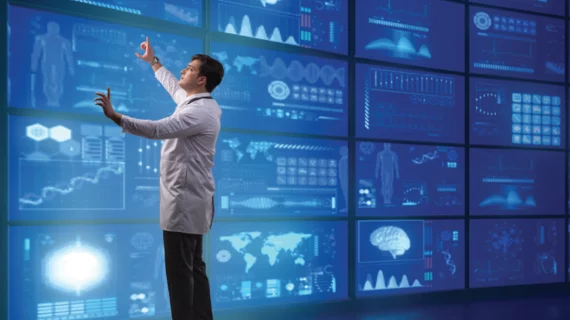AI is almost certain to have a monumental impact on radiology, but what, exactly, will that mean for radiologists?
Some within the specialty fear the technology will replace radiologists altogether, kicking them to the curb like a Christmas tree on Dec. 26. According to a new commentary published in the Journal of the American College of Radiology, however, radiologists will see considerable benefits from the rise of AI—especially if they don’t let other specialists make all the big decisions.
“If we sit back and do nothing, there is a chance we could be marginalized by AI,” wrote lead author Bibb Allen, MD, chief medical officer of the American College of Radiology Data Science Institute (ACR DSI), and colleagues. “On the other hand, if we play a leadership role in AI development, the best days for radiologists, our specialty and our patients are yet to come.”
Allen’s co-authors were Keith Dreyer, DO, PhD, chief science officer of the ACR DSI, and Geraldine McGinty, MD, MBA, chair of the ACR Board of Chancellors. The three authors explored numerous ways AI could help radiologists on a day-to-day basis. AI solutions will be able to detect “subtle yet critical findings,” for example, helping find things that the radiologist could have potentially missed. The technology will also be able to knock out quicker, more straightforward tasks that often take up a radiologist’s time, meaning each specialist can go on to see more patients. And as the demand for radiology is expected to go up in the near future, giving radiologists more time to do their most important tasks is especially helpful.
Allen et al. also noted that AI “does not have to be perfect to be helpful.”
“Not all radiologists perform identically on every case we interpret, and for that matter neither will AI,” the authors wrote. “If AI recognizes abnormalities not identified by all radiologists and at the same time all radiologists also find abnormalities not recognized by AI, then the combination of humans plus AI has great potential to improve care.”
Another key point of the authors’ commentary was that it will still be a long time before AI is ever trusted with the big “should we” decisions associated with “the human side of medical care.” Radiologists make “should we” decisions all the time, and there are no signs that an AI algorithm is close to being ready to make those decisions on its own.
In addition, Allen and colleagues explained, it seems misguided to simply view AI as a tool to get rid of radiologists. Instead, it’s critical to think of how these advanced algorithms can make the biggest possible impact on patient care.
“To be most impactful, AI developers should focus on the tasks that radiologists cannot do well, such as integrate more information from a variety of sources into our radiological reports, or predict a cancer phenotypic responsive to therapy based on information in the image data that are visually perceptible,” the authors wrote. “Also, algorithms that increase department efficiency and ensure patient safety, including triage of cases with critical imaging findings, will also be immediately useful long before the applications that provide autonomous care.”
The three authors concluded on an optimistic note, noting that there will also be a “need for well-trained radiologists.” And AI may lead to some significant changes, but there is no reason to think that those changes will lead to radiologists being replaced.
“Predicting future workforce needs has always been challenging, and predicting our workforce as AI evolves may be no different,” the authors wrote. “But the future seems incredibly bright for our specialty.”

